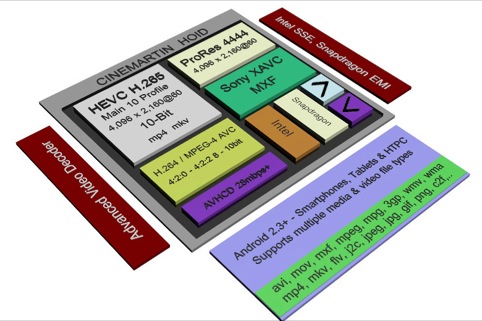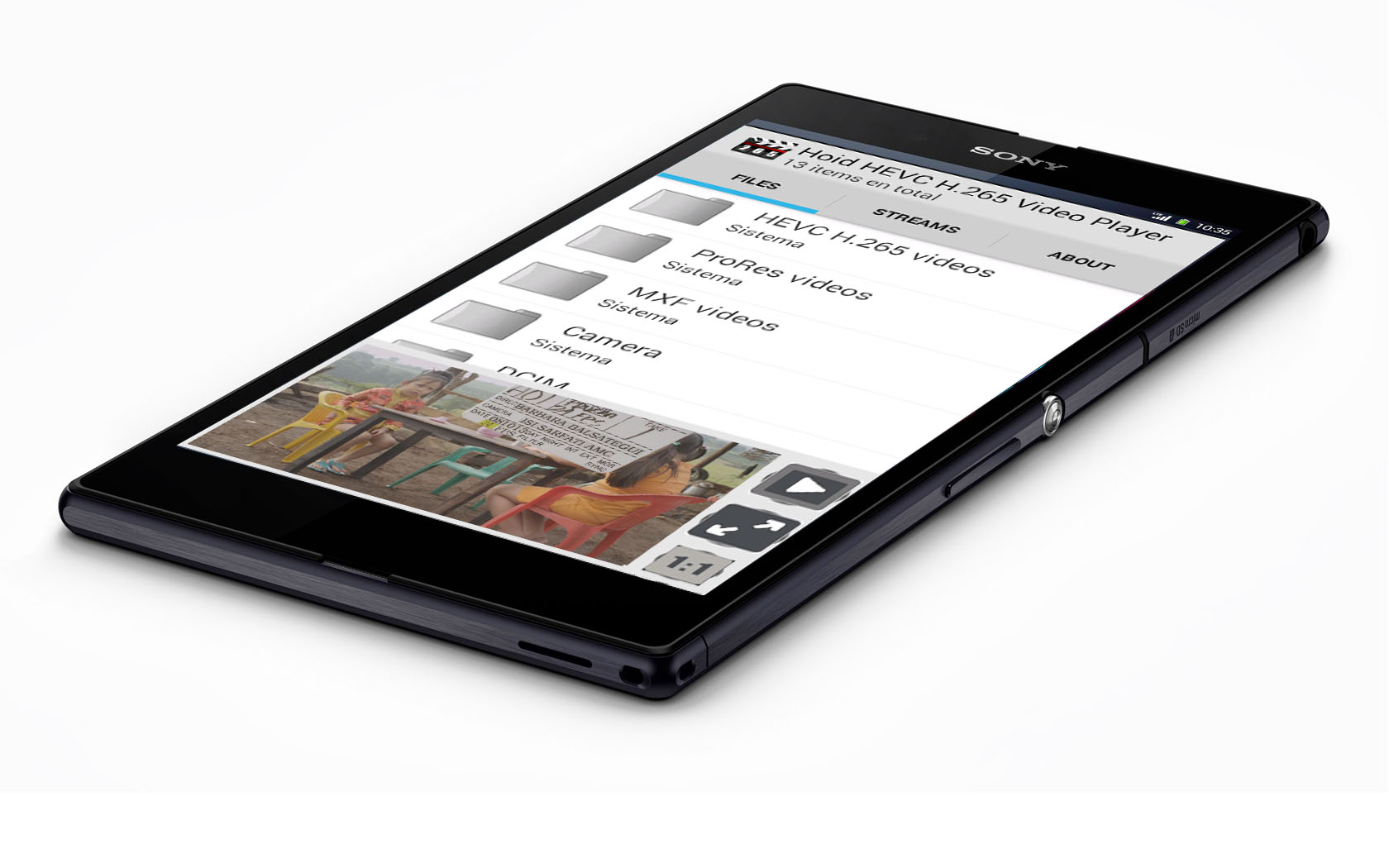
Barcelona-based Cinemartin has created what is claimed to be the first app for Android smartphones that allows them to play H.265-compressed videos, including a version that goes beyond 4K.
Called Hoid, it can play video encoded using the High Efficiency Video Coding format at 0.3 per cent of the original file size, “with unnoticeable differences on small and medium screens,” it claims.
Hoid has been developed using an advanced programming architecture design based on multilibrary layers, and has been optimised for snapdragon 800, 801 and 805 series CPUs and the latest Intel Atom processors for mobile. It is also compatible with older CPU/GPU models, supporting all Android devices from v3.0. Cinemartin plans to release versions for iPhone and Windows Mobile later this year.
It is primarily a professional media and video player, focused on high quality playback, and boasts compatibility with a very wide variety of video, multimedia and photo or graphics files, including support for MXF files, such as Sony’s XAVC and XAVCs AVC, and Sony, Panasonic, JVC and Canon AVCHD implementations. It also has Apple ProRes decoding up to 4:2:2 and 10-bit, and can play back videos in such containers as MKV, mp4, mov, MTS, avi, WMV, WMA, mpeg, mpg, flv, mp3, AAC, m4v, ts (transport stream) and 3gp.
Cinemartin is also planning a future HEVC H265 encoder for mobile devices that will inherit some of the features of its Cinec 3.X encoder. That will allow devices to compress / encode / convert video recordings (directly from camera or from files) to H.265 videos at very small file sizes with barely noticeable visual differences compared to the originals, which will make it easier to share and upload mobile video recordings.
H.265 videos produced with Cinec can be from 10 to 0.5 per cent the original size, with similar quality on normal screens, and imperceptible differences on small displays. Until the release of the Android H.265 encoder, users can encode HEVC using Cinec 3.X, which produces H.265 videos compatible for playback with Hoid.
For Android playback of 4K users will require Hoid Pro or Gold with at least a Snapdragon 800+ processor. Android playback of beyond 4K videos requires Hoid Gold.

Cinemartin Hoid is likely to be available in three variants, including the 4K Pro (in English, Spanish, German, Chinese, Japan and Russian), which now is available from the Google Play market, and the Gold version, for beyond 4K along with advanced formats / codecs support. There will also be a basic version supporting playback of videos up to 1080.
Cinemartin has a YouTube video showing a comparison between h.264 and h.265 encoded using Cinec that also includes a demo of Hoid (at 07.00) – www.youtube.com/watch?v=9v3oiBSINl4&feature=youtu.be
Also go to http://cinemartin.com/cinec/hoid/samples/ for various other video samples encoded using H.265, including a new Mercedes Benz CLS63 trailer that originated on an SR Master of 3.86GB and was converted to an AVC file of 119MB then to a 1.52MB HEVC file ready for distribution on websites and mobile devices.
Plin Plugin for Premiere
Cinemartin’s recently-introduced Plin Plugin for Adobe Premiere, which enables almost any video input to be converted to ProRes and H.265 on Windows, is now at version 1.2. This is three times faster than the previous version, so that a video that took more than 11 minutes for render and encode to ProRes using v1.1 on a core i7 with SSDs for a four minute 1080p video, takes just three minutes to render using v1.2.
It can export to all versions of ProRes including the 4444 for 4:4:4 and the 422 standards, as well as ProRes proxies, and is available for Adobe Premiere CS 5.5, CS 6 and Premiere Pro CC, at €49 for the standard version (single core processing up to 1080 30p – not ProRes 4444) and from €99 for the Pro version (dual core – adds UHD/4K and basic HEVC) or Gold version (full HEVC and can use up to six cores for faster processing).

It also now includes NTSC and PAL resolutions – both 4:3 and widescreen, and eight Aspect ratios (including Square Pixels and three Anamorphic varients for the Pro or Gold versions), and it should now work with all Windows users.
Cinemartin has a YouTube video showing a comparison between h.264 and h.265 encoded using Cinec that also includes a demo of Hoid (at 07.00):
https://www.youtube.com/watch?v=9v3oiBSINl4
The company’s website also features other video samples encoded using H.265, including a new Mercedes Benz CLS63 trailer that originated on an SR Master of 3.86GB and was converted to an AVC file of 119MB then to a 1.52MB HEVC file ready for distribution on websites and mobile devices:







